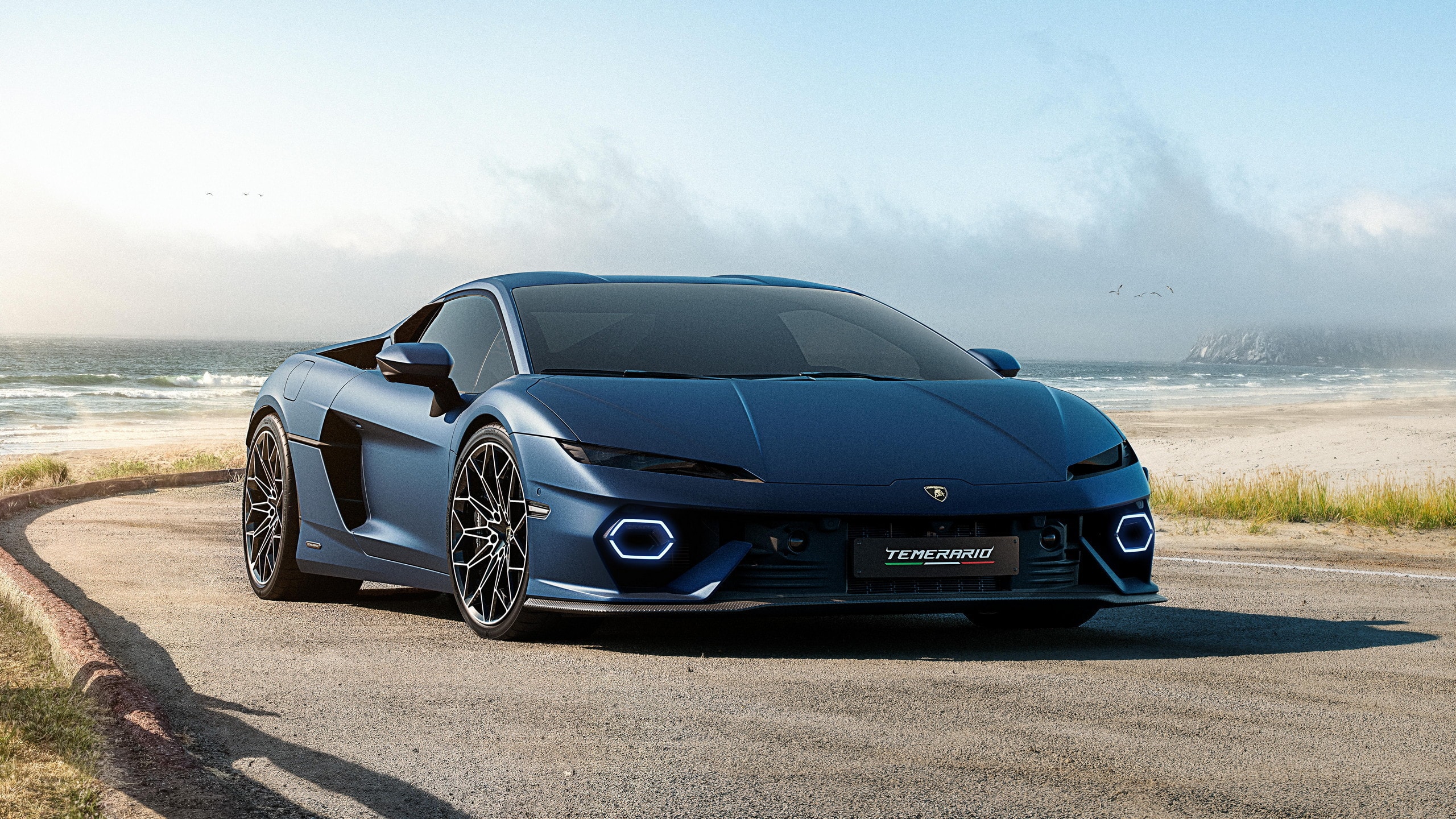The Corvette ZR1 truly raises eyebrows with its staggering 1,064 horsepower. Since the ‘Vette first donned the ZR1 badge in 1970, it has been a symbol of American muscle, starting with a respectable 370 hp and still turning heads today. Even without its extreme power, Corvette enthusiasts would have eagerly embraced the new C8 ZR1.
The legacy of the ZR1 was solidified with the 1990 model, which boasted a top speed of 175 mph, Lotus engineering, and a 0-60 mph time of just 4.5 seconds, allowing it to compete with many supercars of its era.
With the introduction of the mid-engine C8 Corvette, Chevrolet saw an opportunity to challenge not only supercars but also the elite hypercar market. The upcoming 2025 Corvette ZR1 is set to feature a powerful twin-turbocharged V8, exceeding the horsepower of both the Bugatti Veyron and Mercedes-AMG’s flagship hypercar.
In a world dominated by hypercars that often cost millions, this iconic American sports car has emerged as a horsepower champion, with an estimated price tag of $200,000 or less. has compiled a list of 10 hypercars that fall short of the Corvette ZR1’s impressive power output.
10) The GMA T.50: A New Era of Supercars
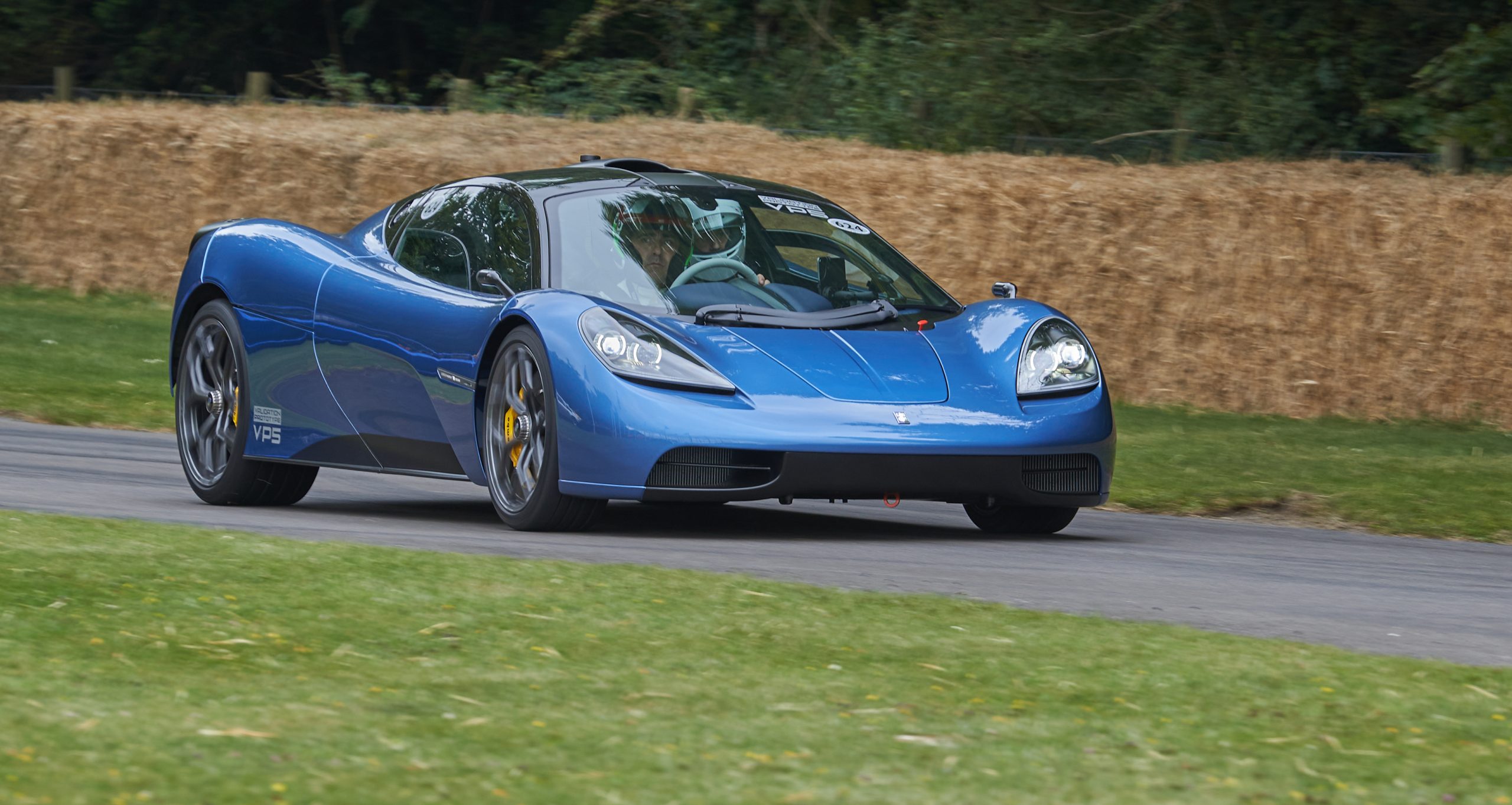
The GMA T.50 is a remarkable supercar that pays homage to the legendary McLaren F1, which is often regarded as one of the greatest supercars ever made. Created by renowned designer Gordon Murray, the T.50 aims to carry on the legacy of high performance and driving purity that defined the original F1.
Under the hood, the T.50 features a 3.9-liter V12 engine, developed by Cosworth specifically for this car. Weighing only 390 pounds, this powerful engine produces an impressive 654 horsepower. What sets the T.50 apart is its ability to rev up to a jaw-dropping 11,100 rpm, offering an exhilarating driving experience reminiscent of a high-performance superbike.
One of the most innovative features of the T.50 is its giant fan, which helps create downforce, effectively sucking the car to the road. This design enhances stability at high speeds, ensuring that drivers can enjoy the full capabilities of the car without compromising safety.
For those who appreciate a traditional driving experience, the T.50 comes equipped with a six-speed manual transmission with an H-pattern layout, adding an analog touch to this cutting-edge vehicle. With its blend of advanced engineering and classic design, the GMA T.50 is a true marvel of modern automotive technology, promising an unparalleled driving experience for enthusiasts.
9) The Gordon Murray T.33: A Modern Classic
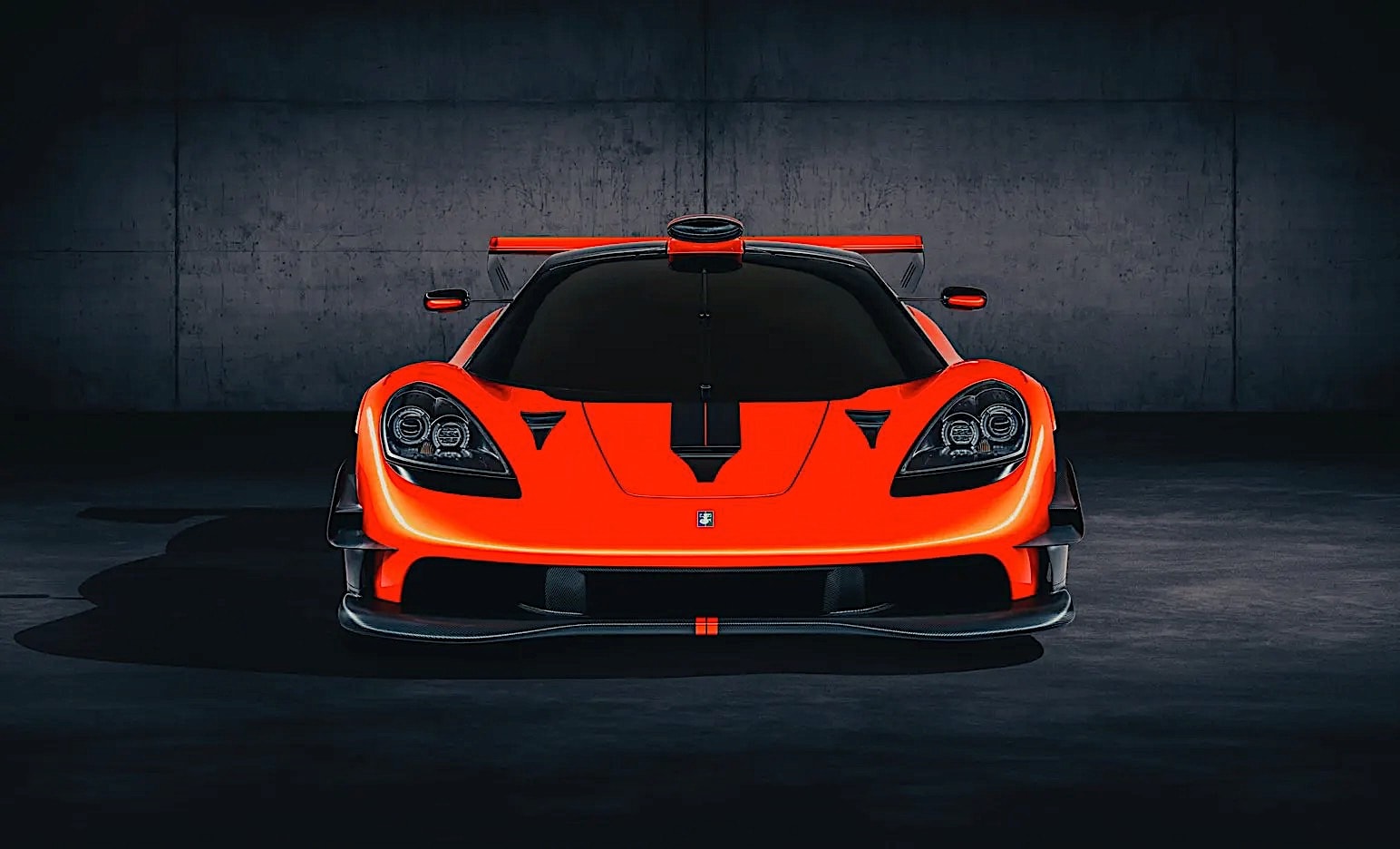
The Gordon Murray T.33 is an exciting addition to supercars, and it follows in the footsteps of its predecessor, the T.50. Designed by legendary automotive engineer Gordon Murray, the T.33 reflects his deep appreciation for the iconic sports cars of the 1960s, blending classic styling with modern technology.
At the heart of the T.33 is a remarkable 3.9-liter V12 engine, developed by Cosworth. While this engine shares its foundation with the one found in the T.50, the T.33 features a slightly more relaxed tuning, producing an impressive 607 horsepower. This powerful engine allows the car to reach a top speed of around 200 mph, making it not just a beautiful vehicle but also a high-performance machine.
The T.33’s lightweight construction is made possible by its carbon fiber body, which contributes to its agility and responsiveness on the road. This careful attention to weight savings and performance makes the T.33 a standout in supercars. With its blend of vintage inspiration and cutting-edge engineering, the Gordon Murray T.33 is sure to capture the hearts of car enthusiasts everywhere.
8) The Lamborghini Veneno, A Hypercar Masterpiece

The Lamborghini Veneno is a striking example of automotive excellence and exclusivity. Introduced in 2013 to mark Lamborghini’s 50th anniversary, this hypercar showcases everything that makes Lamborghini one of the most revered names in the automotive world.
At the heart of the Veneno is a powerful 6.5-liter V12 engine, which produces an astonishing 750 horsepower and 507 lb-ft of torque. This impressive power allows the Veneno to accelerate from 0 to 60 mph in just 2.7 seconds, making it one of the fastest cars on the planet. With a top speed of 220.5 mph, the Veneno lives up to its hypercar status.
The design of the Veneno is equally impressive. Its aggressive and aerodynamic shape is made entirely from carbon fiber, ensuring both strength and lightweight performance. The monocoque construction enhances the car’s rigidity while minimizing weight, contributing to its incredible handling and speed.
Lamborghini produced only 13 units of the Veneno, making it extremely rare and highly sought after. Among these, three Veneno Coupés were painted in the colors of the Italian flag—green, white, and red—while a gray model resides in the Lamborghini Museum, showcasing the brand’s commitment to innovation and design. Additionally, nine Veneno Roadsters were created, further elevating the car’s exclusivity.
The Lamborghini Veneno represents the pinnacle of performance and design, combining breathtaking speed with cutting-edge technology. It stands as a testament to Lamborghini’s legacy and continues to capture the imagination of car enthusiasts worldwide.
The Lamborghini Veneno is an extraordinary hypercar that represents the pinnacle of automotive engineering and design, created to celebrate Lamborghini’s 50th anniversary. As one of the most exclusive and powerful models ever produced by the Italian manufacturer, the Veneno takes Lamborghini’s aggressive styling and high-performance DNA to a new extreme. Only a handful of these cars were built—just four coupe models (one of which was retained by Lamborghini) and nine roadsters—making the Veneno one of the rarest hypercars in the world.
At the heart of the Lamborghini Veneno is its awe-inspiring 6.5-liter naturally aspirated V12 engine, which is derived from the already legendary Aventador. This powertrain generates a staggering 740 horsepower and 507 lb-ft of torque, allowing the Veneno to rocket from 0 to 60 mph in just 2.8 seconds and reach a top speed of 221 mph (355 km/h). Paired with a 7-speed automated manual ISR (Independent Shifting Rods) transmission, the Veneno delivers lightning-quick gear changes and a level of acceleration that few cars can match, placing it firmly among the elite hypercars of the world.
The Lamborghini Veneno is designed with a singular focus on aerodynamics and downforce, reflecting its close ties to motorsport. Its aggressive bodywork is not only visually striking but also engineered to optimize airflow and minimize drag.
Every detail, from the massive rear wing to the numerous air intakes and splitters, serves a functional purpose to enhance the car’s stability and performance at high speeds. The lightweight carbon fiber monocoque chassis further improves the car’s agility and responsiveness, ensuring it remains firmly planted on the road or track even at blistering speeds.
One of the most defining characteristics of the Veneno is its appearance, which is nothing short of breathtaking. The hypercar boasts Lamborghini’s signature sharp, angular design language, but is taken to the next level.
The low-slung, wide stance, and striking contours of the car create an impression of relentless forward motion, even when standing still. The large, triangular wheel arches and Y-shaped headlights contribute to Veneno’s futuristic aesthetic, while the iconic scissor doors add a touch of drama and Lamborghini flair. The car’s body is also adorned with aggressive, aerodynamic components, such as a prominent rear diffuser and an adjustable rear wing, giving it a race-car look and feel.
In addition to its remarkable performance and design, the Lamborghini Veneno incorporates advanced materials and technology to maximize both speed and safety. The car’s body is almost entirely made from carbon fiber-reinforced polymer, a material that offers a perfect combination of strength and lightness.
This allows the Veneno to weigh just 3,285 pounds (1,490 kilograms), significantly lighter than many other supercars of its era. The extensive use of carbon fiber extends to the interior, where Lamborghini’s patented Forged Composite is featured prominently in the dashboard, seats, and other key components, further reducing weight while maintaining the highest levels of structural integrity.
The interior of the Lamborghini Veneno is designed to match its extreme exterior, focusing on performance and driver engagement. The minimalist cockpit features lightweight bucket seats made of carbon fiber, designed to provide maximum support during high-speed maneuvers.
The dashboard and controls are also stripped down to the essentials, emphasizing functionality over luxury. However, despite the race-oriented design, the Veneno still offers some high-end amenities and finishes, such as Alcantara upholstery and a digital instrument cluster that provides all the necessary performance data at a glance. Lamborghini’s signature hexagonal and Y-shaped motifs are present throughout the cabin, reinforcing the connection between the car’s interior and exterior design.
Driving the Lamborghini Veneno is an experience like no other. The hypercar’s raw power, combined with its precision-engineered handling, makes it a thrilling ride on both the track and the road.
The all-wheel-drive system, coupled with advanced aerodynamics and active rear-wing technology, ensures that the Veneno remains stable even under the most demanding conditions. The precise steering and responsive suspension allow the driver to feel completely connected to the road, delivering an adrenaline-pumping experience with every turn. The roar of the V12 engine as it revs to its redline further enhances the sense of excitement, creating an unmistakable sound that is pure Lamborghini.
The exclusivity of the Lamborghini Veneno goes beyond just its performance and design. With only 13 models ever built (including roadsters and coupes), the Veneno is one of the most sought-after collector’s cars in the world.
Its limited production run and extraordinary price tag, originally around $4.5 million, have made it a symbol of extreme wealth and automotive prestige. However, due to its rarity and historical significance as a 50th-anniversary model, Veneno’s value has only increased over time, with some examples reportedly selling for well over $8 million in the secondary market.
When compared to other hypercars, such as the Ferrari LaFerrari, McLaren P1, and Porsche 918 Spyder, the Lamborghini Veneno stands out not just for its rarity but also for its sheer audacity.
While its competitors may focus on hybrid technology and innovation, the Veneno remains a purist’s hypercar, relying on a naturally aspirated engine and aerodynamic engineering to deliver its performance. This adherence to traditional hypercar values, combined with its outrageous design, has made the Veneno a standout even in the highly competitive world of hypercars.
The Lamborghini Veneno is more than just a car; it is a statement. It embodies the brand’s dedication to pushing the boundaries of automotive performance and design, offering an unparalleled driving experience that only a few will ever have the opportunity to enjoy. For Lamborghini enthusiasts and hypercar collectors alike, the Veneno represents the ultimate expression of the brand’s heritage and vision for the future, ensuring its place in the pantheon of automotive legends.
7) The Lamborghini Sián FKP 37, A Hybrid Hypercar Marvel
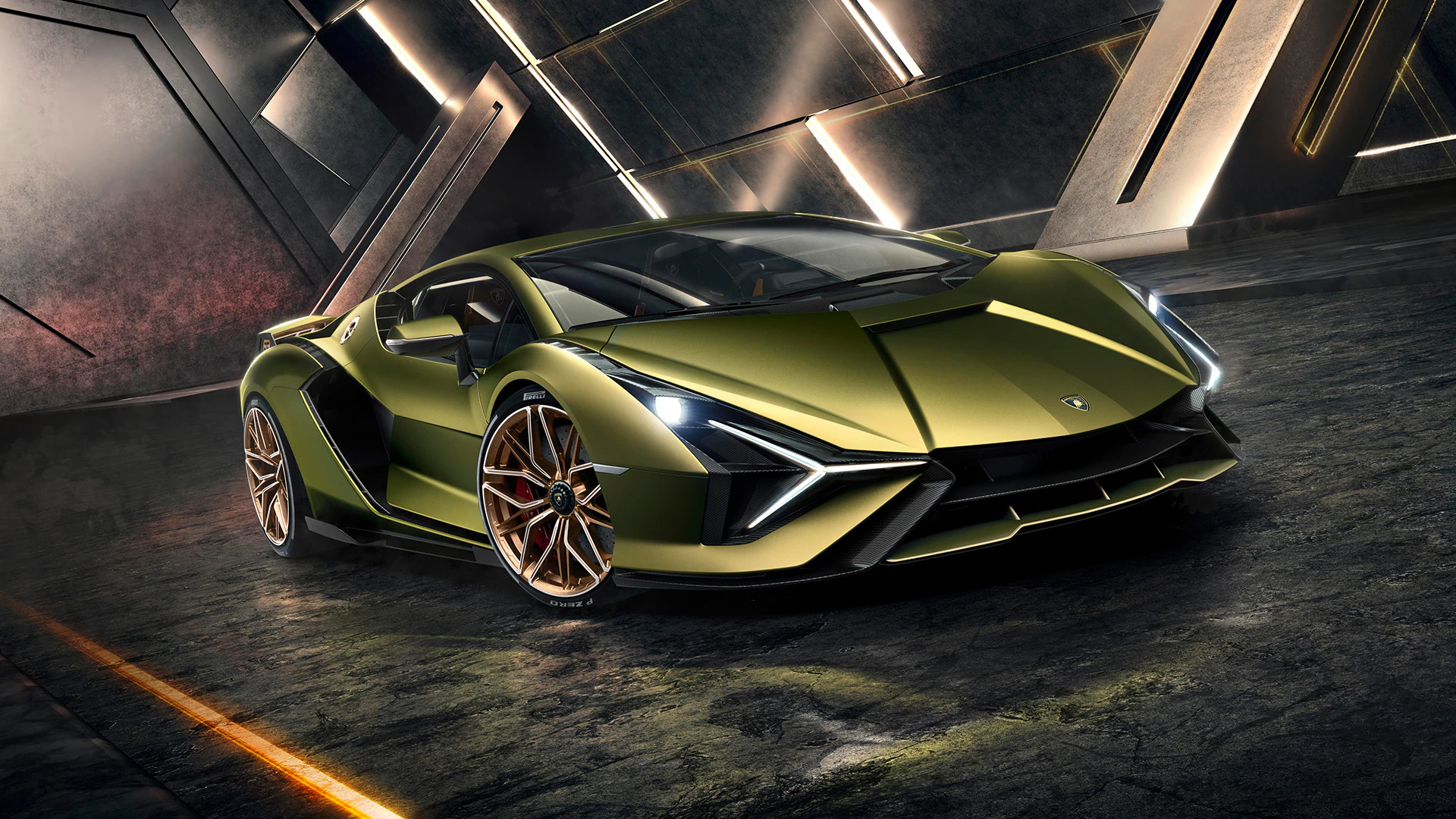
The Lamborghini Sián FKP 37 is a groundbreaking hypercar that combines the traditional power of a V12 engine with innovative hybrid technology. As a standout model in supercars, it boasts a unique blend of performance and modern engineering.
At the heart of the Sián is a 6.5-liter V12 engine, which is complemented by a hybrid system using supercapacitors. This technology allows the Sián to store electricity more efficiently than traditional lithium-ion batteries. In fact, the supercapacitor is three times more powerful than a battery of the same weight, making it a key component of the car’s performance. Together, the V12 engine and electric boost generate an impressive 807 horsepower, enabling the Sián to achieve breathtaking speeds of over 220 mph.
Acceleration is another highlight of the Sián’s performance, with the car capable of reaching 0-60 mph in less than 2.9 seconds. This rapid acceleration makes it one of the quickest hypercars on the market, showcasing Lamborghini’s commitment to delivering thrilling driving experiences.
The design of the Sián reflects its high-performance nature, featuring sharp lines and aerodynamic elements that enhance its sporty appearance. The distinctive look is not just for show; it also contributes to the car’s overall performance by reducing drag and improving stability at high speeds.
The Lamborghini Sián FKP 37 is more than just a hypercar; it’s a symbol of innovation and performance in the automotive world. By marrying the power of a traditional V12 engine with cutting-edge hybrid technology, Lamborghini has created a vehicle that pushes the boundaries of what a supercar can be. The Sián FKP 37 represents the future of high-performance driving, blending speed, power, and sustainability in an awe-inspiring package.
The Lamborghini Sián FKP 37 represents a bold leap into the future for the iconic Italian automaker, combining cutting-edge hybrid technology with the raw power and unmistakable design that Lamborghini is famous for. Showed in 2019 as Lamborghini’s first-ever production hybrid, the Sián showcases the brand’s ability to merge extreme performance with innovation while paying homage to its traditional values.
The “Sián” name, meaning “flash” or “lightning” in the Bolognese dialect, reflects the car’s lightning-fast capabilities and forward-thinking technology, while the “FKP 37” honors the late Ferdinand Karl Piëch, who was instrumental in shaping the modern automotive world.
At the heart of the Lamborghini Sián FKP 37 is a 6.5-liter naturally aspirated V12 engine, a hallmark of Lamborghini’s supercars. This engine is similar to the one found in the Aventador SVJ, but Lamborghini has paired it with a 48-volt mild-hybrid system, making it the most powerful Lamborghini ever produced. The V12 produces 785 horsepower, and with the addition of the electric motor, the total output reaches a staggering 819 horsepower.
This hybrid system doesn’t use a conventional lithium-ion battery but instead employs a supercapacitor, which is three times more powerful than a traditional battery of the same weight. This advanced energy storage system allows for rapid charging and discharging, providing an immediate boost of power without adding significant weight to the car.
The performance figures for the Lamborghini Sián FKP 37 are nothing short of astonishing. The car can sprint from 0 to 60 mph in just 2.8 seconds and has a top speed of over 217 mph (350 km/h), placing it firmly among the fastest hypercars in the world.
The Sián’s hybrid system not only enhances acceleration but also improves the car’s responsiveness during low-speed maneuvers, such as parking or cruising through traffic. The electric motor adds 34 horsepower, which kicks in during those moments when the V12 alone isn’t fully utilized, making the car more efficient and smoother in everyday driving situations.
One of the most remarkable aspects of the Lamborghini Sián is its innovative energy regeneration system. Unlike traditional hybrids that recharge their batteries during braking, the Sián’s supercapacitor charges during deceleration and braking, storing energy that can then be used to assist the V12 during acceleration. This system provides a continuous flow of power, ensuring that the car is always ready to deliver its full performance potential without the lag that sometimes accompanies hybrid systems.
The exterior design of the Lamborghini Sián FKP 37 is unmistakably Lamborghini, but it pushes the brand’s already dramatic design language to new extremes. The Sián combines sharp, angular lines with aerodynamic efficiency, making it look like a futuristic spaceship on wheels. The car’s low, wide stance, hexagonal-shaped headlights, and aggressive front fascia give it a commanding presence on the road.
One of the most striking features is the Y-shaped LED daytime running lights, which are a nod to Lamborghini’s signature design elements while also providing a futuristic edge. The rear of the car features six hexagonal taillights and a large active rear spoiler that adjusts based on speed and driving conditions to improve downforce and stability.
The Sián’s body is made almost entirely from carbon fiber, contributing to its lightweight structure and enhancing its overall performance. Lamborghini’s engineers have worked meticulously to ensure that every design detail serves a functional purpose, from the massive air intakes that cool the V12 engine to the fins and diffusers that improve aerodynamics. The Sián also incorporates active cooling vanes made from special materials that react to temperature changes, opening and closing to regulate airflow without the need for electronic control.
Inside, the Lamborghini Sián FKP 37 is as futuristic and luxurious as its exterior. The cabin is crafted from premium materials, including leather, Alcantara, and carbon fiber, giving it a high-end feel while maintaining a focus on performance.
The minimalist dashboard features a digital instrument cluster that displays all essential information, including speed, gear selection, and battery charge, with cutting-edge graphics that match the car’s futuristic personality. The seats are sculpted for both comfort and support during high-speed driving, and Lamborghini offers extensive customization options, allowing buyers to tailor the interior to their personal tastes.
One of the most interesting aspects of the Sián’s interior is Lamborghini’s use of sustainable materials. The company has introduced a leather alternative made from natural fibers and is exploring new ways to incorporate eco-friendly materials without compromising luxury or performance. This move aligns with the hybrid nature of the Sián, demonstrating Lamborghini’s commitment to a more sustainable future in the automotive industry.
On the road, the Lamborghini Sián FKP 37 provides an exhilarating driving experience. The combination of the V12 engine and the hybrid system offers instant torque and power delivery, allowing the car to surge forward with incredible force. The all-wheel-drive system ensures maximum traction, while the rear-wheel steering system enhances agility and cornering precision.
Lamborghini has also equipped the Sián with a state-of-the-art suspension system that adapts to changing road conditions, providing a smooth ride during daily driving while maintaining the razor-sharp handling expected from a hypercar.
Compared to other hypercars, such as the Ferrari SF90 Stradale and the McLaren Speedtail, the Lamborghini Sián stands out for its unique approach to hybrid technology and its striking design. While competitors may rely on more complex hybrid systems or fully electric setups, the Sián’s use of a supercapacitor offers a lightweight and efficient solution that enhances performance without compromising the visceral experience of driving a naturally aspirated V12.
In terms of exclusivity, the Lamborghini Sián is in a league of its own. Lamborghini produced only 63 coupe models and 19 roadsters, ensuring that the Sián remains one of the rarest and most coveted hypercars in the world. Each Sián was sold before it even debuted publicly, with a price tag of around $3.6 million, further solidifying its status as a collector’s item.
The Lamborghini Sián FKP 37 is a masterpiece of automotive engineering, representing the perfect fusion of Lamborghini’s legendary V12 power and the brand’s forward-thinking approach to hybrid technology. Its breathtaking design, unparalleled performance, and cutting-edge innovation make it a true icon in hypercars.
The Sián not only celebrates Lamborghini’s storied past but also paves the way for the future, offering a glimpse of what’s to come as the automotive world embraces electrification while staying true to the thrill of driving.
6) The McLaren Senna A Tribute to Racing Excellence

The McLaren Senna is an extraordinary hypercar that pays homage to the legendary Formula 1 driver Ayrton Senna, widely regarded as one of the greatest racers in the history of motorsport. With its impressive performance and striking design, the Senna embodies the spirit of speed and precision that Senna himself represented.
Under the hood of the Senna is a powerful 4-liter twin-turbocharged V8 engine, generating an astonishing 778 horsepower and 590 lb-ft of torque. This robust powertrain allows the Senna to accelerate from 0 to 60 mph in just 2.8 seconds, showcasing its incredible performance capabilities.
Despite its immense power, the Senna’s lightweight construction is what truly sets it apart. Weighing in at just 2,641 lbs (dry), it is lighter than many ordinary cars, including a VW Golf GTI. This remarkable weight reduction contributes to its agile handling and swift acceleration, making it one of the lightest hypercars ever produced since the iconic McLaren F1.
The design of the Senna is as functional as it is beautiful, with a focus on aerodynamics and downforce. Every curve and feature of the car serves a purpose, enhancing its performance on both the road and the racetrack. The aggressive styling, characterized by sharp lines and large air intakes, reflects its racing heritage and gives it a bold presence.
The McLaren Senna stands as a testament to automotive engineering and racing prowess. Its combination of lightweight construction, powerful engine, and aerodynamic design make it a true hypercar, capable of delivering an exhilarating driving experience. As a tribute to Ayrton Senna, this car captures the essence of speed and performance, honoring the legacy of one of the greatest drivers in the sport.
The McLaren Senna is a tribute to one of Formula 1’s greatest drivers, Ayrton Senna, who was a legendary figure in motorsport. This car is designed to capture the essence of what made Ayrton Senna such a dominant force on the track: raw performance, precision, and a relentless focus on pushing the boundaries of speed. Every element of the McLaren Senna is engineered to be as functional and performance-driven as possible, making it one of the most extreme road-legal track cars McLaren has ever produced.
At the heart of the McLaren Senna is its 4.0-liter twin-turbocharged V8 engine, which delivers an astonishing 800 horsepower and 590 lb-ft of torque. This engine is paired with a 7-speed dual-clutch transmission, allowing the Senna to accelerate from 0 to 60 mph in just 2.7 seconds. With a top speed of 208 mph (335 km/h), the Senna is blisteringly fast, but it’s not just about straight-line speed.
McLaren has designed the car to excel on the track, where handling, braking, and cornering performance are equally important. The Senna’s active aerodynamics, lightweight carbon-fiber construction, and advanced suspension system combine to create a driving experience that is unmatched in terms of precision and agility.
The McLaren Senna’s design is entirely focused on performance. While its looks are polarizing, with some describing the car as aggressive and even alien-like, every sharp angle and surface has been designed with aerodynamics in mind. The large, adjustable rear wing and front splitters generate significant downforce, helping to keep the car planted on the track, even at high speeds.
The massive rear wing also functions as an air brake, increasing stability and reducing braking distances when needed. The combination of active aerodynamics and lightweight construction allows the Senna to perform at the highest level, especially when tackling tight corners and high-speed straights.
One of the key highlights of the McLaren Senna is its lightweight construction, which is critical to its performance on the track. The Senna weighs just 2,641 pounds (1,198 kilograms), making it one of the lightest hypercars ever built. This is achieved through the extensive use of carbon fiber, both in the monocoque chassis and the body panels.
Even the seats and interior elements are made from carbon fiber, minimizing weight without compromising on the car’s structural integrity or performance. McLaren has also stripped back many of the comfort features typically found in luxury hypercars to focus purely on performance, creating a minimalist cabin that is centered around the driver’s experience.
The interior of the McLaren Senna is as purposeful as its exterior. The cockpit is designed to put the driver in complete control, with every element within easy reach and minimal distractions. The digital instrument cluster provides real-time data on the car’s performance, including speed, lap times, and engine status. The seats are race-style bucket seats, designed to hold the driver and passenger firmly in place during high-speed maneuvers.
McLaren offers limited customization options for the interior, as the focus is on reducing weight and maximizing performance. However, despite the spartan design, the Senna still includes some high-end materials and finishes, such as Alcantara and carbon fiber, which add a touch of luxury to the otherwise stripped-back interior.
On the track, the McLaren Senna truly shines. The car’s advanced suspension system, which includes RaceActive Chassis Control II (RCC II), allows for unparalleled handling and responsiveness.
The suspension is fully adjustable, meaning the car can be optimized for different track conditions, providing the perfect balance of stiffness and comfort depending on the driving situation. The combination of active suspension and aerodynamics means that the Senna can take corners at speeds that would be unthinkable for most road cars. The braking system, featuring carbon-ceramic brakes, is equally impressive, providing tremendous stopping power to match the car’s incredible speed.
A key feature of the McLaren Senna is its focus on driver engagement. Unlike some other hypercars that rely heavily on electronic aids to enhance performance, McLaren has ensured that the Senna provides a more direct and visceral driving experience. While it does include driver aids like traction control and ABS, these systems can be dialed back or turned off entirely, allowing skilled drivers to fully exploit the car’s capabilities on the track. This makes the Senna a more challenging but rewarding car to drive, as it requires a high level of skill and focus to extract its maximum potential.
While the McLaren Senna is road-legal, it is clear that this car is built with the track in mind. Its stiff suspension, lack of sound insulation, and aggressive aerodynamics make it less suited to everyday driving, but for those who want the ultimate track-day weapon, the Senna delivers an experience like no other.
The rawness of the car’s power, combined with its lightweight construction and precision handling, provides an unrivaled level of excitement and engagement. It’s a car that demands the full attention of the driver and rewards those who can master its formidable capabilities.
In terms of exclusivity, the McLaren Senna is in a class of its own. Only 500 units were produced, making it one of the most coveted hypercars on the market. Each car was sold for around $1 million, and all units were spoken for shortly after its announcement.
This rarity, combined with its association with the legendary Ayrton Senna, has made the car a valuable collector’s item. Many owners have chosen to keep their Sennas in pristine condition, viewing them as both a tribute to one of motorsport’s greatest icons and a pinnacle of automotive engineering.
The McLaren Senna’s significance goes beyond just being a hypercar. It represents McLaren’s commitment to pushing the boundaries of what’s possible in a road-legal track car while paying tribute to the legacy of Ayrton Senna.
The car’s focus on performance, precision, and driver engagement embodies the spirit of Ayrton’s racing philosophy. For fans of both McLaren and Ayrton Senna, this car is a fitting tribute to a man who was dedicated to excellence and constantly pushed the limits of what was possible on the track.
The McLaren Senna is a hypercar that combines cutting-edge technology with a singular focus on performance. It’s a car built for those who crave the thrill of driving at the limit, offering a raw, unfiltered experience that few cars can match.
With its lightweight construction, powerful engine, and advanced aerodynamics, the Senna delivers an unparalleled track experience, while its limited production ensures it remains a rare and coveted piece of automotive history. For McLaren and Ayrton Senna fans alike, the McLaren Senna stands as a testament to the relentless pursuit of speed and performance.
5) The Porsche 918 Spyder, A Hybrid Marvel of Performance
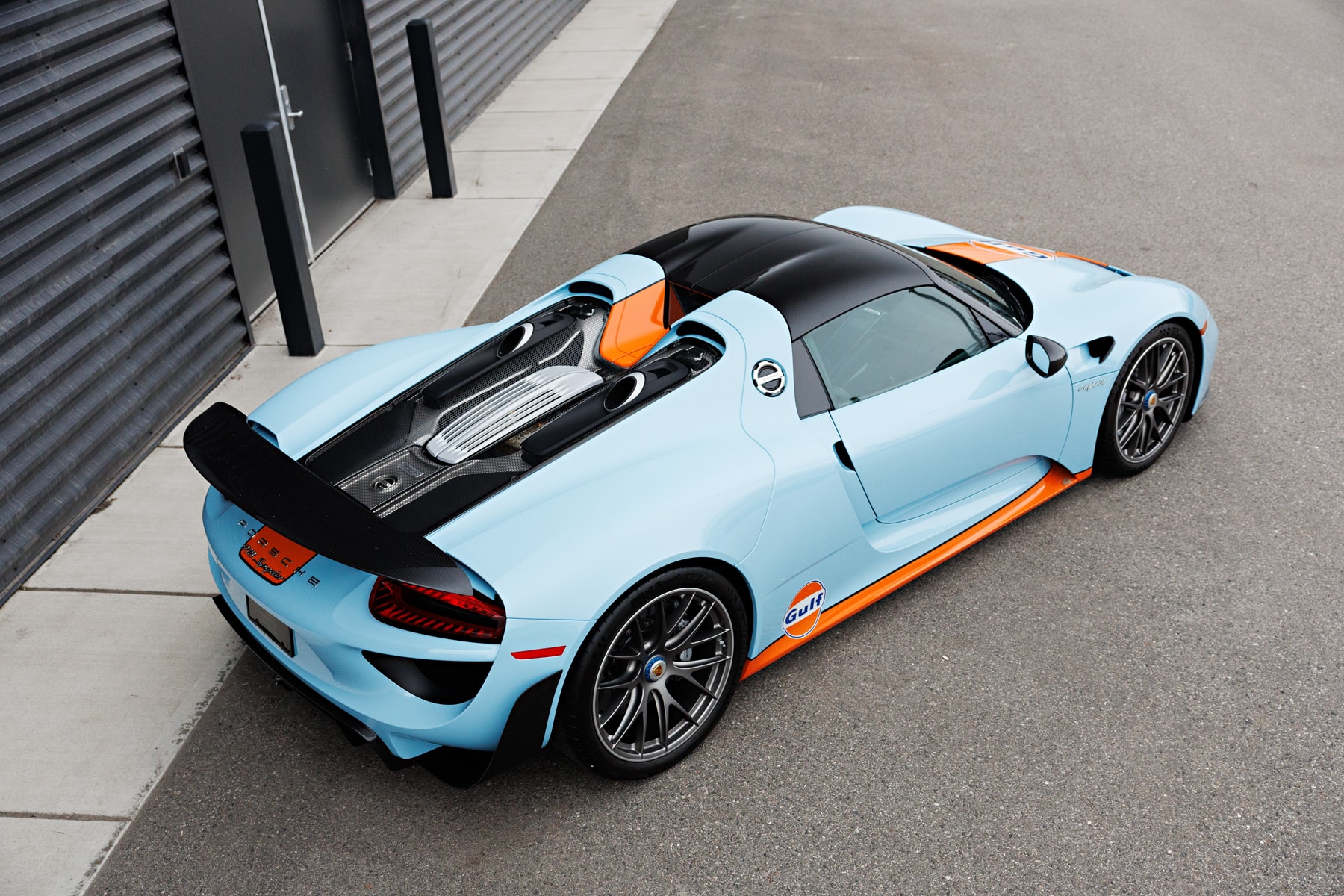
The Porsche 918 Spyder made its debut in 2013 and quickly became the flagship model of Porsche’s lineup. With a limited production run of just 918 units, this hypercar stands out not only for its exclusivity but also for its remarkable engineering and performance.
At the heart of the 918 Spyder is a powerful 4.6-liter V8 engine paired with two electric motors. This combination produces an astounding total output of 887 horsepower and 944 lb-ft of torque. This hybrid setup not only delivers incredible power but also enhances efficiency, allowing the car to perform exceptionally well in various driving conditions.
One of the most impressive features of the 918 Spyder is its acceleration. It can go from 0 to 60 mph in just 2.2 seconds, making it one of the fastest production sports cars ever built. This astonishing speed is complemented by its agility, as the 918 Spyder can find tight corners and winding roads with ease.
In addition to its blistering acceleration, the Porsche 918 Spyder is also known for its lap time on the famous Nürburgring-Nordschleife. It completed the challenging course in an impressive 6 minutes and 57 seconds, showcasing its racing pedigree and advanced engineering.
The design of the 918 Spyder is both striking and functional. Its sleek, aerodynamic body not only looks stunning but also helps reduce drag and improve stability at high speeds. Inside, the car features a driver-focused cockpit with advanced technology and luxurious materials, making it a comfortable and high-tech driving experience.
The Porsche 918 Spyder is a true testament to Porsche’s commitment to performance, innovation, and luxury. By combining a powerful V8 engine with cutting-edge hybrid technology, the 918 Spyder offers a driving experience that is both thrilling and efficient. As one of the most remarkable hypercars in automotive history, it represents the pinnacle of Porsche’s engineering prowess and dedication to excellence.
The Porsche 918 Spyder is a groundbreaking hypercar that represents the pinnacle of Porsche’s engineering prowess, blending blistering performance with cutting-edge hybrid technology. Launched in 2013, the 918 Spyder was Porsche’s first attempt at creating a plug-in hybrid hypercar, and it set new standards in the industry by proving that hybrid technology could be seamlessly integrated into a high-performance machine. As part of the “Holy Trinity” of hypercars, alongside the Ferrari LaFerrari and the McLaren P1, the 918 Spyder has left an indelible mark on automotive engineering.
At the heart of the Porsche 918 Spyder is its hybrid powertrain, which combines a 4.6-liter naturally aspirated V8 engine with two electric motors – one powering the front wheels and the other paired with the V8 to drive the rear. The V8 engine alone produces 608 horsepower, and when combined with the electric motors, the total output rises to an impressive 887 horsepower and 944 lb-ft of torque.
This incredible power allows the 918 Spyder to accelerate from 0 to 60 mph in just 2.5 seconds, making it one of the fastest production cars in the world. It has a top speed of 214 mph (344 km/h), showcasing the incredible performance capabilities of this hybrid powertrain.
What sets the 918 Spyder apart from its competitors is its ability to run purely on electric power for short distances. In full-electric mode, the car can travel up to 12 miles (19 km) on battery power alone, making it not only a high-performance hypercar but also one with a focus on efficiency and sustainability.
The 918 Spyder’s plug-in hybrid system uses a liquid-cooled lithium-ion battery pack that can be charged via a wall outlet or through regenerative braking. This combination of electric motors and a powerful V8 allows the 918 Spyder to be both eco-friendly and incredibly fast, highlighting Porsche’s commitment to pushing the boundaries of hybrid technology.
The 918 Spyder’s advanced all-wheel-drive system plays a crucial role in its performance. The electric motor on the front axle powers the front wheels, while the V8 and rear electric motor drive the rear wheels, giving the car exceptional grip and control.
This setup, combined with Porsche’s Torque Vectoring system, provides remarkable handling characteristics, allowing the 918 Spyder to tackle corners with incredible precision. The car’s performance on the track is nothing short of astonishing, with its lap time at the Nürburgring Nordschleife standing at 6 minutes and 57 seconds, making it one of the fastest road-legal cars to ever lap the legendary circuit.
The Porsche 918 Spyder’s design is an expression of form following function, with every line and surface serving a specific aerodynamic purpose. The car’s low, wide stance and flowing curves help to manage airflow, reduce drag, and increase downforce, ensuring that the car remains stable at high speeds.
One of the key features of the 918 Spyder’s design is its active aerodynamics, which includes adjustable front and rear spoilers that deploy at different speeds to optimize airflow and enhance performance. The car’s lightweight carbon-fiber-reinforced polymer (CFRP) monocoque chassis also plays a critical role in its agility and speed, ensuring that it remains as light and stiff as possible.
The interior of the Porsche 918 Spyder is a perfect blend of luxury, technology, and sportiness. The cabin is dominated by a central touchscreen interface that controls various aspects of the car’s performance and infotainment systems.
Porsche has paid close attention to the ergonomics of the interior, ensuring that everything is within easy reach of the driver, allowing for a seamless driving experience. The materials used in the interior are of the highest quality, with leather, carbon fiber, and aluminum being used extensively throughout. The seats are designed to provide maximum support during high-speed driving, while still offering comfort for longer journeys.
The 918 Spyder’s driving experience is nothing short of exhilarating. Thanks to its hybrid powertrain, the car delivers instant torque from its electric motors, allowing it to launch off the line with incredible force.
The naturally aspirated V8 engine provides a visceral soundtrack that adds to the overall experience, making the 918 Spyder one of the most thrilling cars to drive. Despite its immense power, the 918 Spyder is surprisingly easy to handle, thanks to its all-wheel-drive system and advanced electronic aids, which ensure that the car remains composed even when driven at the limit.
One of the most impressive aspects of the Porsche 918 Spyder is its ability to seamlessly transition between different driving modes. The car offers five distinct driving modes: E-Power, Hybrid, Sport Hybrid, Race Hybrid, and Hot Lap. E-Power mode allows the car to run solely on electric power for short distances, while Hybrid mode balances the use of the electric motors and the V8 engine for improved efficiency.
Sport Hybrid and Race Hybrid modes prioritize performance, with the latter delivering the most aggressive power delivery for track use. Hot Lap mode pushes the car to its absolute limit, extracting every bit of power from both the V8 and the electric motors for maximum performance.
In terms of exclusivity, the Porsche 918 Spyder is in a league of its own. Porsche produced only 918 units, ensuring that it remains a rare and highly sought-after hypercar. The car’s price tag, which started at around $845,000, made it one of the most expensive production cars at the time, but for collectors and enthusiasts, it was a small price to pay for a piece of automotive history. The 918 Spyder’s limited production run, combined with its cutting-edge technology and stunning performance, has made it a highly valuable collector’s item, with prices on the secondary market now exceeding $1 million.
The Porsche 918 Spyder is more than just a hypercar – it’s a technological showcase that demonstrates Porsche’s ability to innovate and push the boundaries of what’s possible in automotive engineering. Its combination of hybrid technology, mind-blowing performance, and impeccable design make it one of the most iconic hypercars of the modern era. While it was developed as part of a new breed of hybrid hypercars, the 918 Spyder’s legacy will be remembered for its ability to deliver the ultimate driving experience while also offering a sneak peek into the future of performance cars.
The Porsche 918 Spyder is a masterclass in engineering, combining hybrid technology with extreme performance to create one of the most exhilarating and innovative cars ever built.
It stands as a testament to Porsche’s commitment to both sustainability and speed, proving that the future of hypercars doesn’t have to sacrifice performance for efficiency. For those fortunate enough to own one, the 918 Spyder represents the pinnacle of modern automotive design and performance, offering a driving experience that few cars can match.
4) Ferrari LaFerrari, The Ultimate Hybrid Supercar
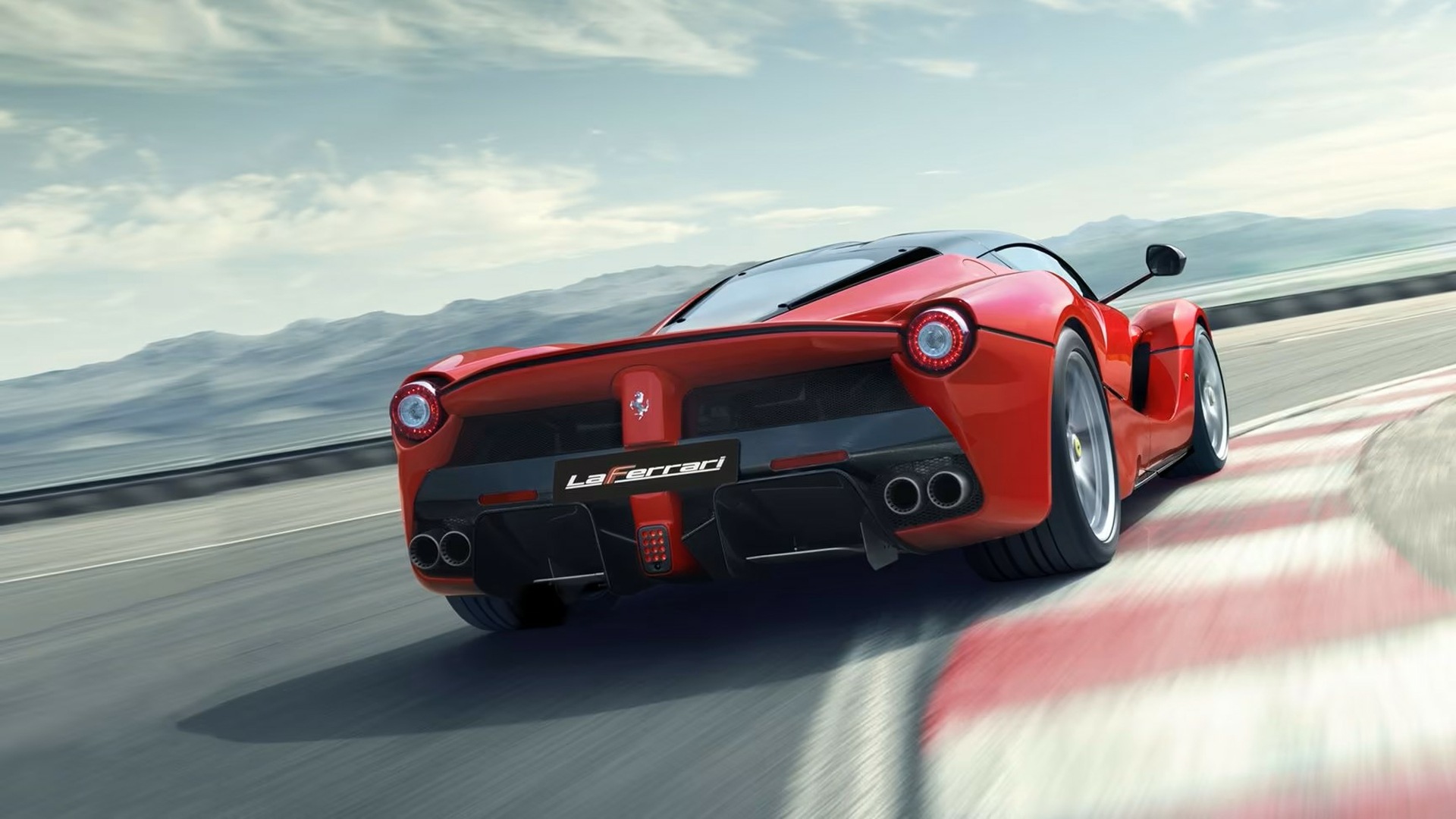
The Ferrari LaFerrari is a supercar that lives up to its incredible name, which means “The Ferrari.” Launched in 2014, it is one of the most remarkable cars ever produced by the legendary Italian brand. Only 499 units were made, making it a highly sought-after vehicle among car enthusiasts and collectors.
At the heart of the LaFerrari is a powerful 6.3-liter V12 engine that produces an impressive 789 horsepower. But that’s not all; it also features a hybrid system that includes an electric motor generating an additional 161 horsepower. This combination allows the LaFerrari to reach a total power output of about 950 horsepower, giving it extraordinary performance on the road.
One of the standout features of the LaFerrari is its acceleration. It can go from 0 to 60 mph in just 2.5 seconds, and it can hit 125 mph in only 6.9 seconds. The car’s top speed is an astonishing 217 mph, making it one of the fastest production cars available. This impressive speed is made possible by Ferrari’s advanced engineering, including its F1-derived hybrid powertrain.
The LaFerrari isn’t just about speed; it also represents Ferrari’s commitment to innovation and sustainability. The hybrid technology allows for better fuel efficiency while still providing thrilling performance. This makes it a true marvel of modern automotive engineering.
Due to its rarity and performance, the LaFerrari has become a symbol of automotive excellence. Some enthusiasts are so passionate about this car that they have even attempted to build their own versions at home, showcasing the LaFerrari’s legendary status in car culture.
The Ferrari LaFerrari is more than just a supercar; it’s a blend of power, speed, and cutting-edge technology. It embodies the spirit of Ferrari and stands as a testament to what is possible in high-performance vehicles.
The Ferrari LaFerrari is a pinnacle of Ferrari’s engineering and design, representing the brand’s first foray into hybrid hypercar territory. Introduced in 2013, LaFerrari is the embodiment of Ferrari’s dedication to performance, innovation, and sheer driving excitement.
With only 499 units produced, this ultra-exclusive hypercar stands as a crowning achievement in Ferrari’s long history of creating some of the world’s most revered sports cars. The name “LaFerrari,” which translates to “The Ferrari,” underscores its significance as the ultimate representation of everything Ferrari has stood for over the years.
At the heart of the LaFerrari lies a 6.3-liter V12 engine, capable of producing a staggering 789 horsepower. However, what sets LaFerrari apart is the addition of an electric motor, which contributes an additional 161 horsepower, bringing the combined output to an astonishing 950 horsepower and 900 Nm of torque.
This hybrid system, known as HY-KERS (Hybrid Kinetic Energy Recovery System), is derived from Ferrari’s experience in Formula 1, making the LaFerrari not only a powerful machine but also one that leverages cutting-edge motorsport technology.
The performance figures speak for themselves: LaFerrari can sprint from 0 to 60 mph in under 2.6 seconds, and it can reach 124 mph (200 km/h) in just 6.9 seconds. The car’s top speed exceeds 217 mph (350 km/h), placing it in the upper echelon of hypercars.
Its hybrid system not only provides incredible power but also improves efficiency, allowing for regenerative braking and enhanced throttle response, especially when accelerating out of corners. Ferrari designed the LaFerrari to be the most extreme road car it had ever made, and in terms of both acceleration and top speed, it lives up to that promise.
One of the most impressive aspects of the LaFerrari’s hybrid system is how seamlessly the electric motor works with the V12 engine. The electric motor fills in any gaps in torque delivery, ensuring that there is instant and consistent power available at all times.
This results in a driving experience that feels endlessly responsive, with lightning-fast throttle reactions and smooth transitions between electric and combustion power. Unlike most hybrids, which focus on fuel efficiency, the LaFerrari uses its electric power purely for performance, making it a true driver’s car in every sense.
Ferrari’s design philosophy for LaFerrari was to create a hypercar that looks as fast as it drives. Its sleek, aggressive lines are not only aesthetically pleasing but also serve to improve the car’s aerodynamics. The car’s low, sculpted front end is designed to channel air over and around the body, reducing drag and increasing downforce. The rear of the car features an active aerodynamic system that adjusts the position of the rear spoiler and diffuser flaps, depending on the speed and driving conditions. This system ensures optimal downforce at high speeds, providing the stability needed to push the car to its limits.
The LaFerrari’s lightweight construction is another key factor in its breathtaking performance. Ferrari engineers utilized carbon fiber extensively in the chassis, body panels, and even some of the interior components. The result is a car that weighs just 3,495 pounds (1,585 kg), despite the additional weight of the hybrid system.
This lightweight design, combined with the car’s potent powertrain, gives it an extraordinary power-to-weight ratio, allowing for razor-sharp handling and lightning-fast acceleration. The LaFerrari’s agility is further enhanced by its advanced suspension system, which features magnetorheological dampers that can adjust in real-time to changing road conditions.
Inside the LaFerrari, the focus is on the driver. The cockpit is minimalist, with a layout inspired by Formula 1, where all key controls are positioned on the steering wheel for easy access. The steering wheel itself is a work of art, featuring integrated buttons for adjusting the car’s driving modes, suspension settings, and hybrid system. Behind the wheel, a large digital display provides all the necessary information about the car’s performance, including speed, RPM, and the status of the hybrid system. The seats are custom-made for each owner, further enhancing the sense of connection between the driver and the car.
The driving experience in LaFerrari is nothing short of exhilarating. The V12 engine roars to life with an unmistakable sound, delivering a thrilling aural experience that few other cars can match. As the electric motor kicks in, the car accelerates with mind-bending force, pushing you back into your seat as the scenery blurs past.
The car’s steering is precise and responsive, allowing for pinpoint control when cornering at high speeds. Despite its immense power, the LaFerrari remains composed and balanced, thanks in part to its advanced electronic stability and traction control systems.
One of the standout features of the LaFerrari is its use of active aerodynamics. At high speeds, the rear spoiler automatically extends to generate more downforce, while the front diffusers and underbody flaps adjust to reduce drag. This system works in harmony with the car’s suspension and hybrid powertrain to provide a driving experience that is both thrilling and manageable. Whether on the road or the track, the LaFerrari feels like it’s glued to the pavement, offering an unparalleled sense of confidence when pushing the car to its limits.
Despite its focus on performance, the LaFerrari also demonstrates Ferrari’s commitment to hybrid technology and sustainability. The use of a hybrid system not only improves the car’s efficiency but also showcases Ferrari’s ability to innovate and stay at the forefront of automotive technology. While the electric motor is used primarily for performance in the LaFerrari, it represents Ferrari’s vision for the future, where hybrid and electric powertrains will play an increasingly important role in high-performance cars.
The exclusivity of the LaFerrari cannot be overstated. With only 499 units produced, each car was reserved for Ferrari’s most loyal customers, and every unit was sold before the car was officially revealed. This level of rarity, combined with its groundbreaking technology and jaw-dropping performance, has made the LaFerrari one of the most coveted cars in the world. It is a true collector’s item, with prices on the secondary market far exceeding its original price tag of around $1.5 million.
The Ferrari LaFerrari is a masterpiece of engineering, design, and performance. It combines the raw power of a V12 engine with the cutting-edge technology of a hybrid system, creating a car that is both breathtakingly fast and technologically advanced.
Its stunning design, lightweight construction, and active aerodynamics make it a true driver’s car, while its hybrid powertrain represents the future of Ferrari’s performance vehicles. As one of the most exclusive and sought-after hypercars ever produced, the LaFerrari will forever remain a symbol of Ferrari’s relentless pursuit of automotive perfection.
3) The McLaren P1, A Hybrid Supercar Engineered for Extreme Performance
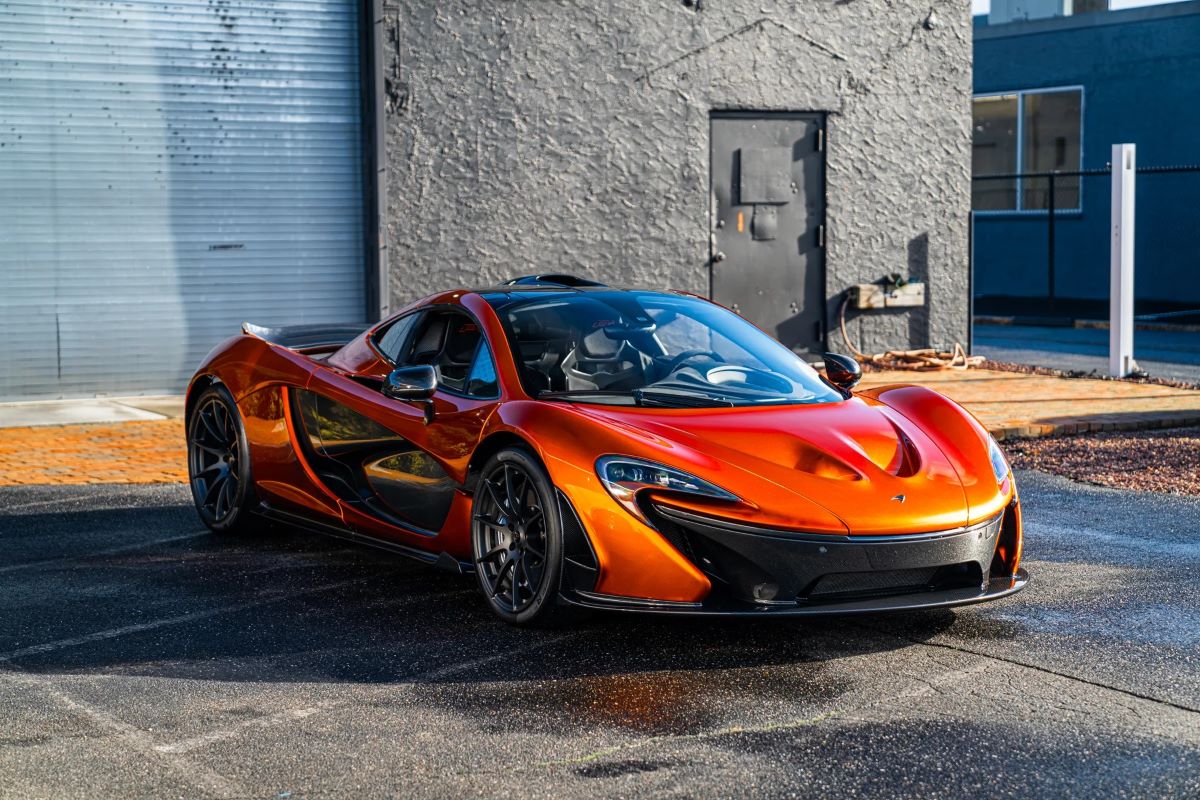
The McLaren P1 is one of the most exclusive and high-performing hypercars ever produced, with only 375 units made. Developed by the renowned British automaker McLaren, this supercar combines cutting-edge technology with exceptional engineering, resulting in an exhilarating driving experience.
At the heart of the P1 is a powerful 3.8-liter V8 engine equipped with twin turbochargers, paired with a single electric motor. This innovative hybrid system produces a total of 891 horsepower and an impressive 664 lb-ft of torque. This powerful combination enables the P1 to accelerate from 0 to 60 mph in just 2.8 seconds, showcasing its remarkable speed and agility.
McLaren put the P1 through rigorous testing during its development, including an extreme cold-weather trial in one of the coldest places on Earth. Engineers took the P1 to the Arctic Circle, where temperatures plummeted to -40°C. The testing ensured that the P1’s hybrid system would perform reliably, even in harsh conditions where other technologies might fail, like a smartphone battery in freezing weather.
In addition to its impressive acceleration, the McLaren P1 boasts a top speed of 217 mph, making it a formidable competitor on both the road and the track. The design of the P1 is both aerodynamic and striking, featuring a sleek body that not only looks stunning but also enhances its performance by reducing drag.
Inside, the P1 is equipped with a driver-focused cockpit, blending advanced technology with luxury. The interior design prioritizes comfort and control, ensuring that drivers can fully enjoy the thrilling performance the car offers.
The McLaren P1 is a remarkable example of modern automotive engineering, combining hybrid technology with outstanding performance. With its limited production and cutting-edge features, the P1 has secured its place as one of the most sought-after hypercars in automotive history.
2) Mercedes-AMG One, The Ultimate Formula 1 Hypercar for the Streets
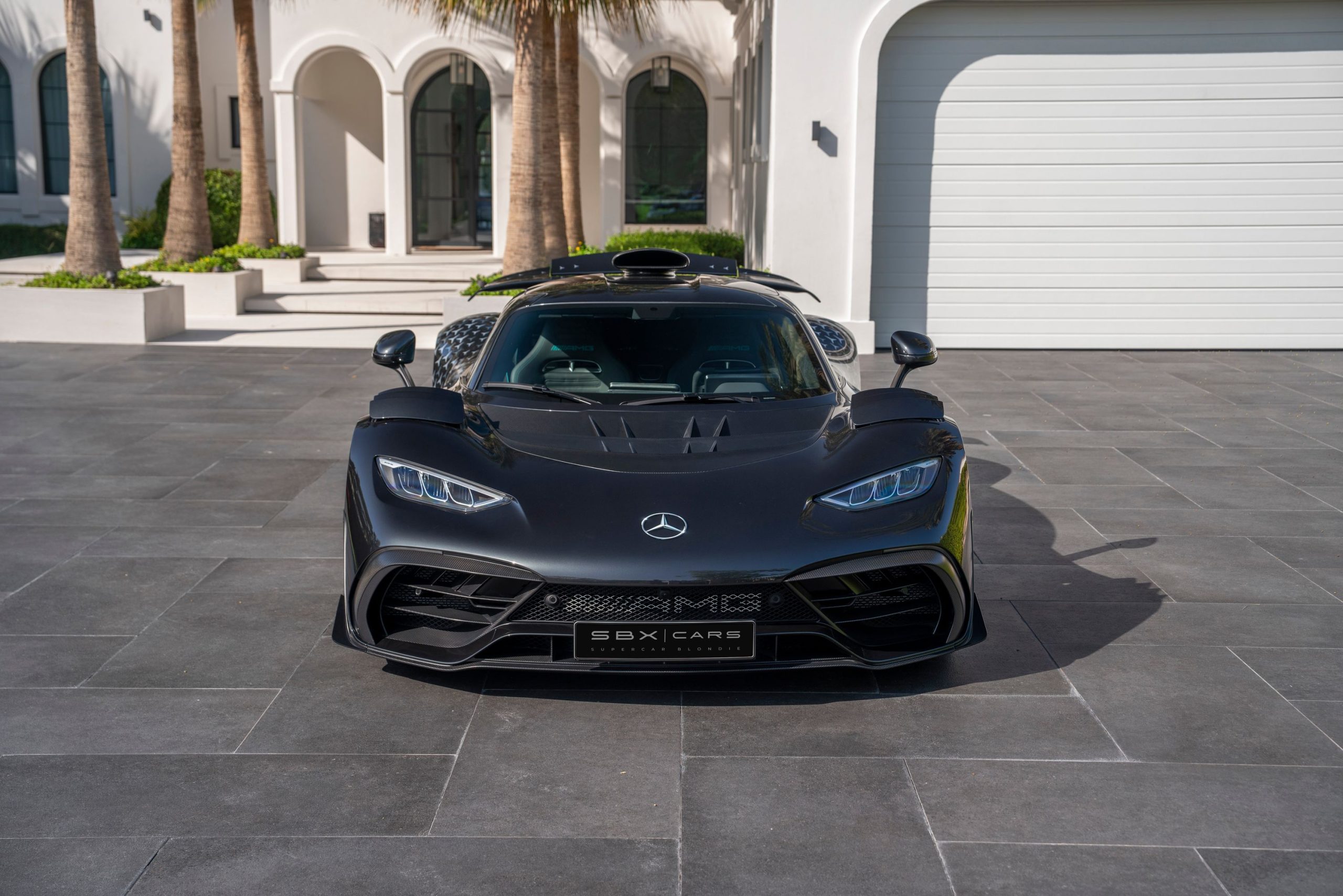
The Mercedes-AMG One is a groundbreaking hypercar that brings the thrilling technology of Formula 1 to everyday roads. This remarkable vehicle showcases the incredible engineering prowess of Mercedes-AMG, combining high-performance features with the latest in hybrid technology.
At the core of the AMG One is a unique 1.6-liter V6 turbocharged engine, which is paired with four electric motors. This innovative setup allows the car to produce a staggering 1,063 horsepower. The combination of the turbocharged engine and electric motors not only provides immense power but also ensures impressive efficiency. The hybrid system uses an 800-volt battery developed by High-Performance Powertrains, the same team behind Mercedes’ Formula 1 engines.
The performance of the Mercedes-AMG One is nothing short of spectacular. It can accelerate from 0 to 60 mph in just 2.8 seconds, making it one of the fastest production cars available. Additionally, it reaches 125 mph in only 7 seconds, showcasing its incredible speed and agility. In just over 15 seconds, the AMG One can surpass 180 mph, proving it is built for the racetrack.
One of the most impressive aspects of the AMG One is its ability to deliver Formula 1-like performance in a street-legal vehicle. The advanced hybrid system and aerodynamics help make it the fastest road car around the legendary Monza racetrack. This level of performance makes the AMG One a true masterpiece of automotive engineering.
The Mercedes-AMG One is not just a car; it’s a fusion of cutting-edge technology and motorsport heritage. With its powerful engine, hybrid technology, and remarkable speed, it stands as a testament to what is possible in hypercars. Whether on the road or the racetrack, the AMG One represents the pinnacle of performance and innovation.
1) Bugatti Veyron EB 16.4: The Iconic Hypercar That Changed the Game
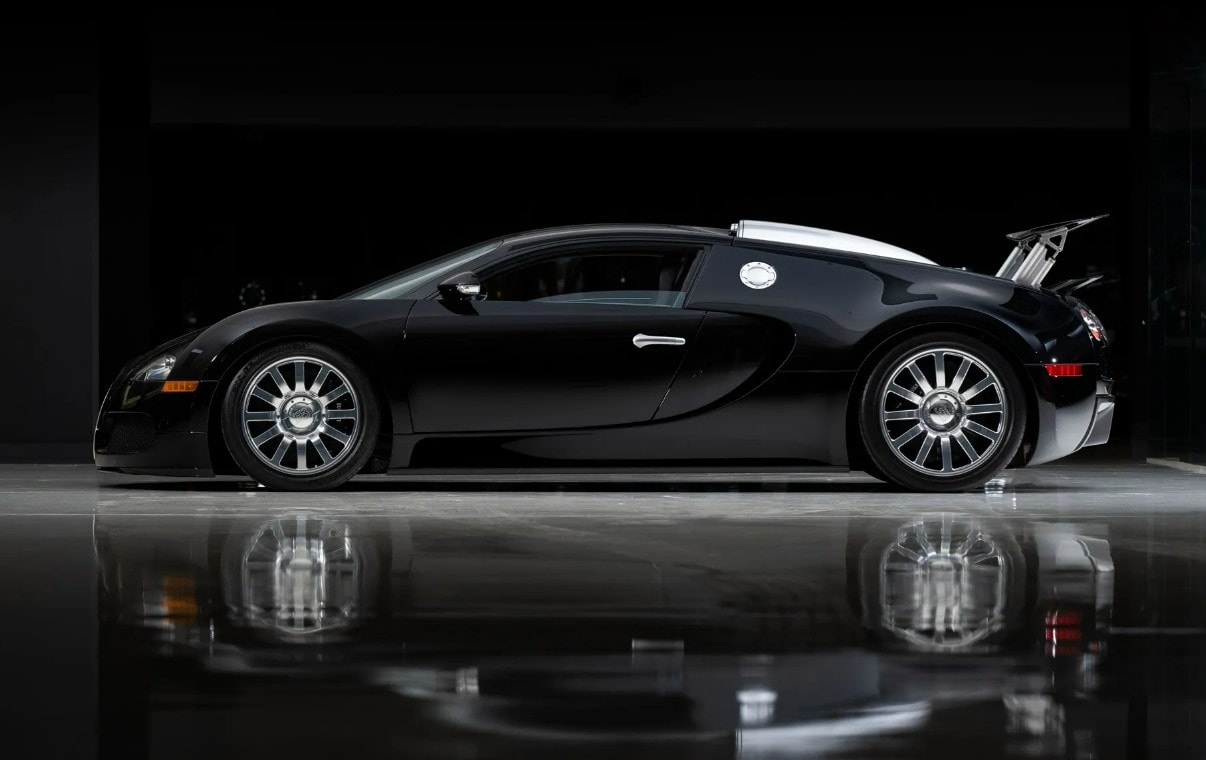
The Bugatti Veyron EB 16.4 made its debut in 2005 and quickly became a symbol of automotive excellence, kicking off the hypercar horsepower war. This groundbreaking vehicle redefined what a performance car could be, setting new standards for speed, luxury, and engineering.
At the heart of the Veyron is its impressive 8.0-liter W16 engine, which features four turbochargers. This powerful engine generates an astonishing 987 horsepower and 922 lb-ft of torque. With this extraordinary power, the Veyron can accelerate from 0 to 60 mph in just 2.5 seconds, making it one of the quickest cars of its time.
What truly sets the Veyron apart is its incredible top speed, which has been officially recorded at 253 mph. This remarkable achievement was confirmed by Car and Driver, showcasing the car’s engineering prowess and aerodynamic design. Despite its speed and performance, the Veyron offers a luxurious cabin filled with high-quality materials and advanced technology, ensuring that drivers experience comfort along with adrenaline.
While the automotive world has since evolved to include electric and hybrid powertrains, the Bugatti Veyron remains a legendary figure. Even in an era where cars like the Corvette ZR1 boast higher horsepower numbers, the Veyron continues to command respect and admiration. Its combination of raw power, speed, and luxury makes it an enduring symbol of automotive history.
The Bugatti Veyron EB 16.4 is more than just a car; it’s a revolutionary hypercar that changed the performance of vehicles forever. Its legacy as one of the most powerful and luxurious cars ever produced ensures that it will be remembered for generations to come.

